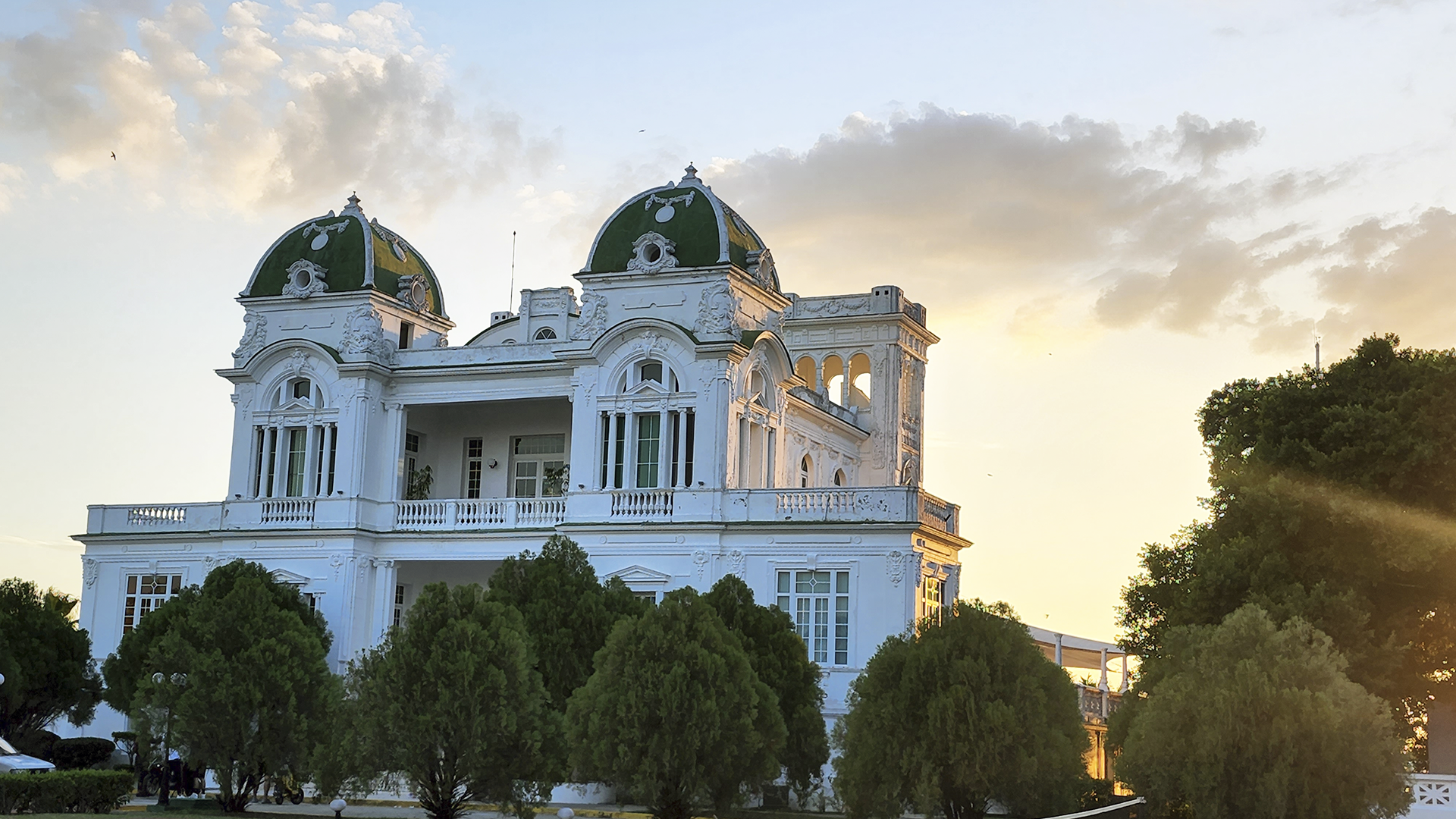
See Cienfuegos “La Perla Del Sur”
Protected from the Caribbean Sea by a bay with the same name, Cienfuegos is approximately 160 miles southwest of Havana along Cuba’s southern shore. The historical center of the city, declared a World Heritage Site in 2005, is a colonial gem founded in 1819.
The architecture, mainly neoclassic with French influence, is represented in facades with arches, ornamental bands, stained-glass, and iron gates, a feature that has won Cienfuegos the epithet of Architectural Jewel of the 19th century. There are eclectic constructions of the 20th century, combined in perfect harmony with the older buildings. On the whole, the city is distinguished by the perfect design of its wide and straight streets and by a peculiar stylistic harmony.
Most buildings around José Martí Square are relatively low, the tallest being the Cathedral Towers, the dome on City Hall, and the Watchtower on Ferrer Palace. These three places allow the visitor to get a glimpse of the city, the bay, and the surrounding mountains.
The historical center of the city and its buildings show the economic and constructive splendor that took place in Cienfuegos between the 19th and early 20th centuries. There are sculptural elements, buildings and places of interest that are a must for the visitor. Some of the most outstanding of these are:
EL PRADO DE CIENFUEGOS
PUNTA GORDA
Once the getaway for the country’s elite, Punta Gorda is the southernmost point of the city. A row of eclectic mansions built in the 19th and early 20th century line the Prado is a showcase of Cuba’s elite of the 19th century. Today, Pinta Gorda is still lined with its eclectic buildings and venues with access for all. Many of these buildings offer the ideal venue for watching the sunset over the bay.
CASTILLO DE JAGUA
Founded in 1742 and built from solid limestone, “El Castillo de Jagua” is the only French-designed fortress in Cuba. It is also unique in that predates the city’s founding by 77 years. Today El Castillo is the site of the Jagua fishing village where traditional fishing methods are passed on from generation to generation.
CIENFUEGOS BOTANICAL GARDENS
The Cienfuegos Botanical Gardens (Jardín Botánico de Cienfuegos) is the result of the first academic exchange between the United States in Cuba. Originally developed by researchers from Harvard University, the garden has one of the most diverse collections of palm trees in the Caribbean alongside Orchids, Ficuses and Bamboos.
LAGUNA GUANAROCA
Laguna Guanaroca is an aviary preserve that is a part of the National System of Protected Areas (SNAP). It is a gathering location for flamingos, osprey and other migratory and indigenous birds.
CITY HALL
This is one of the architectural landmarks of the city. Built between 1929 and 1950, this building is today the site of the provincial government. The building is an impressive structure with a huge dome on its top, and it is perhaps the best example of the typical architecture of Cienfuegos: classic style with eclectic influence.
JOSÉ MARTÍ SQUARE
THE BAY OF CIENFUEGOS
Cienfuegos Bay is one of the city’s major sources of income and an important tourist attraction. Cienfuegos and the bay are inseparable. It is a site for water sports and recreation, a source of food for the city, and the city’s port connects its people to the rest of the world.
This bay was originally known by sailors as “the Great Harbor of the Americas” was “discovered” by Christopher Columbus in 1494. It is the most important bay in the southern coast of Cuba, abundant in stories about pirates and buccaneers, and full of fanciful treasures yet to be found.
TOMÁS TERRY THEATER
It was opened to the public on March 11, 1890. It was a symbol of the growing cultural needs of the city and also of the wealth of the prominent Terry family. In the lobby there is a marble statue of Don Tomás Terry, the theater benefactor, which was made in Naples by the Italian sculptor Tomasso Solari.
For a long time, the theater was one of the most important cultural centers of the island. Outstanding world stars such as Enrico Caruso, Ricardo Stracciani, Jorge Negrete and Sarah Bernhart performed in its stage.
THE `PURÍSIMA CONCEPCIÓN' CATHEDRAL: OUR LADY OF THE IMMACULATE CONCEPTION
This church was built thanks to donations made by local landowners and businessmen. Its construction began in 1819 and ended in 1869. The building was blessed and converted to a church on December 7, 1867 and later raised to the status of Cathedral in 1904. Its five halls are 21 meters wide and 50 meters long. Its 12 stained-glass windows depict Jesus Christ and his twelve apostles.
THE ARTS
The warmth and ingenuity of the people is what gives Cienfuegos its distinctive feel. This personality shines through the arts of the city in its many forms to keep the culture of the city alive.
For more, watch this award-winning video produced by University of Florida Nicholson School of Communications students. This project is the result of a collaboration with la Universidad de Cienfuegos and their students. They shot the program in both English and Spanish.
